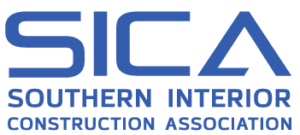Construction File:
A Guide to the Use of Cash Allowances
1. Proper use of Cash Allowances
Cash allowances are recommended where it is impossible to clearly define the scope of a particular item of work, where it is difficult for bidders to accurately estimate the cost of a particular item of work or where access to certain building systems may limit the bidding competition. The Owner or Consultant establishes the amount of cash allowances. Cash allowances must be stated in the Contract Documents and are to be expended as the Owner directs through the Consultant. Overhead and profit connected to the cash allowances should be included in the bid price, not in the cash allowances. The Contract Price includes all cash allowances. Examples of where it is appropriate to use a cash allowance are:
- Telephone and Cable service connection fees
- Secondary telephone or cable service fees
- Natural Gas service connection fees
- Water service connection fees
- Sanitary and Sewer service connection fees.
- Any other public utility fees
- Transferring ‘as built’ or ‘record drawings’ into
a reproducible format - Inspection of Seismic component construction
where required by a third party - Proprietary products (such as controls for mechanical
systems where an owner may have
an interface requirement with existing systems)
01. Cash Allowances for ‘As Built or Record Drawings’
The Contractor is responsible for maintaining and completing “as built drawings” or “record drawings” throughout the course of construction. The cost of the transfer of the site records onto other permanent or reproducible formats such as CAD drawings or sepias is the responsibility of the Owner.
02. Cash Allowance for Seismic Inspections
There must be no unreasonable allocation of seismic risk onto the Contractor. Where applicable, one of the following methods shall be used to ensure that seismic risk is allocated appropriately:
- The Owner may pay for additional consultant services required to design seismic components;
- A cash allowance may be included in the contract to pay for the design of seismic components; or
- All seismic components shall be included in the tender documents and inspected by a third party hired by the Owner.
2. Who Should Include For Cash Allowances
The contractors have expressed concern about whose responsibility it is to carry the cash allowance. They would like to see the cash allowance stated as being explicitly carried by the appropriate Trade Contractor NOT the General Contractor. The Contractors are typically unable to mark-up elements of work that are not carried as a cost item in their contracts. Even though tender documents may state that the Trade Contractor is to mark-up the cash allowance and provide warranty, the marketplace reality is that the Contractors will likely be unable to do so. While this may sound like a savings for the owner, the problem will manifest itself when the time comes for warranty work to be performed and there is no mental and monetary connection for the trade contractor to perform. This practice contravenes the inherent fairness of the contract process to simply try to assign liability to a party that does not have the corresponding costs (and potentially the mark-up on those costs) included in their contract.
3. Implementation Process
- All elements of the work should flow through the contract.
- The warranty should be the responsibility of the trade that carries the monetary provision for the goods.
- If items have to be pre-purchased, they should be done by cash allowance. a. Cash allowances should be for a specific tender such as asbestos removal or connection fees b. The cash allowance should not be used for contingency items (i.e. miscellaneous mechanical and electric). These types of items should be carried by a contingency allowance on which mark-up is allowed.
- The appropriate trade should carry the specific cash allowance.a. If the cash allowance is not specific to a trade, it is a contingency and the General should carry the contingency.
- The cash allowance amounts should only be listed in the cash allowance section of Division 1. References to these cash allowances should be identified in the appropriate trade section.
- Mark-ups are covered outside of the cash allowance by the appropriate contractor.
The Construction File is a publication of the BC Construction Association.
For additional information contact the BCCA.









